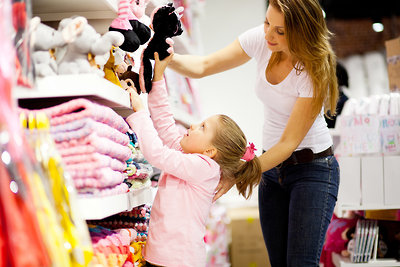Physical vs. Emotional Needs – Which One Does Your Product Address?
Abraham Maslow, well known for the creation of his hierarchy of needs chart, managed to delineate in five steps all the needs of humanity. He starts with the most basic, physical needs including food, water and clothing and then progresses up through safety, love and esteem to what he calls self actualization. In the marketplace there are products to address and capitalize on these needs. Those products meeting the needs of the categories higher up on the chart can command a greater price because theoretically, they are harder to achieve.
The first barrier to entry for any new manufacturer in the marketplace is to identify the need a said product is intended to satisfy. Most products address a physical need, others an emotional need, with a great majority of them overlapping into both but favoring one or the other. Knowing where your product is on the physical to emotional spectrum helps to direct how you communicate your product to the marketplace.
Physical vs. Emotional Needs
Many products in the children’s category were created to address a child’s physical needs such as baby food, diapers or strollers. There’s a very rational motivation to buy these items. Moms have no choice as they need to feed, diaper and get their children around.
For products that address physical needs, the product’s features and benefits come to the forefront for decision making on the part of the consumer. Is the food organic? Are the diapers absorbent? How much weight will the stroller hold? Parents certainly take these factors into consideration when choosing which products to buy. Essentially, they can compare the competition apples to apples to see which one best performs at addressing the physical need to be met.
Features and benefits may help sift the choices in the beginning, but certainly don’t determine the final decision in most cases. Even with baby food, diapers and strollers there’s an element of an emotional need that must be met as well. Moms are buying products for their children, with whom they are emotionally invested and as such the products they purchase must meet whatever internal standards they have created.
For example a mom may believe that not only must the baby food be organic, but maybe it must also be made by a certain brand. Or the diapers, while absorbent, should also be environmentally friendly and either cloth versus disposable. Maybe the stroller, which can hold the needed weight, also needs to be made in the U.S.A. to support American manufacturers. Emotional needs will address Maslow’s upper tiers of safety, love and esteem.
Determining Which Need a Product Addresses
From my examples above it’s not uncommon for many products to address both physical and emotional needs. Many times it’s the physical need that attracts a manufacturer into the marketplace. However, if possible, some manufacturers will attempt to elevate their product to also address one or more emotional needs so as to differentiate their products.
A question to ask yourself about your product: Is my product more of a want or need? Of course, most all products are needed, but how much? What are the alternatives? For example, I need shoes to protect my feet but I want Jimmy Choo’s. While the designer brand addresses the physical need, the decision to buy this particular brand has more to do with an emotional need for esteem than physically protecting my feet. Try to understand where you are on the spectrum from physical to emotional.
Baby Food –– For manufacturers of baby food, certain attributes of their product are governed by the FDA and non negotiable. Beyond that, they may choose to use premium ingredients, organic ingredients, environmentally-friendly packaging, etc. In this particular category, organic is moving away from being a differentiator and more of a barrier to entry, with demand increasing for organic baby foods. It’s making it harder and harder to compete in baby food. Essentially, this product addresses a physical need with a underlying emotional need for providing safe food to children.
Diapers –– There are two camps in the diaper world: cloth (reusable) and disposable. While it’s argued that disposable diapers are filling up landfills, their convenience still is quite compelling and continues to propel sales. Whether cloth or disposable, the diaper choices available in each camp have a lot in common with each other. This is because there are certain features and benefits that are expected by consumers and without such the products would not be desirable. Unlike baby food which can directly impact the baby’s overall health, diapers are more utilitarian and as such primarily address a physical need.
Strollers –– Theoretically, strollers aren’t “needed”. A parent could hold the child, but anyone who’s ever held a 20+ pound baby for any length of time knows this is not realistic. Strollers have one basic function, to transport children. Beyond this they can vary quite dramatically in the features and benefits they tout. Additionally, the aesthetics of strollers can range from the super simple umbrella stroller to very plush strollers with sleek designs. Strollers address a physical need but more so address the emotional needs of esteem and safety.
What to Do Now that You Know Your Need
Once you’ve determined where your product is on the spectrum, you can use this information to craft your communication pieces from packaging to advertising and PR. For those products that trend more towards the physical needs, a strong emphasis on the features will be useful. For products that trend more towards emotional needs, play up the intrinsic benefits.
If you make diapers, talk about absorbency, wicking away moisture to prevent diaper rash, etc. If you make baby food, talk about safe ingredients that taste great to babies. Play up the emotional need of safety first followed by the physical need to feed the baby. Finally, for the stroller manufacturers, you will want to illustrate how your strollers address the emotional needs of esteem and safety. Speak first to the higher order need of esteem followed by the less compelling (but certainly expected) need of safety.
Regardless of your particular product, determine which needs yours addresses and prioritize the communication of those needs giving greater importance to the higher order emotional needs followed by the features and benefits of the physical needs being addressed.
About Insights Discovered
Based in Las Vegas, Nevada, Insights Discovered was founded by Penny Redlin in an effort to share her professional expertise within the children’s product category. The company’s mission is to give every mompreneur an opportunity for success. Insights Discovered exclusively services children’s products brands. The specific industry focus demonstrates a strong dedication to the unique needs of children’s products companies. Insights Discovered offers strategic planning, market research and traditional marketing services.
For more information, visit www.insightsdiscovered.com or call 702.218.5707.











